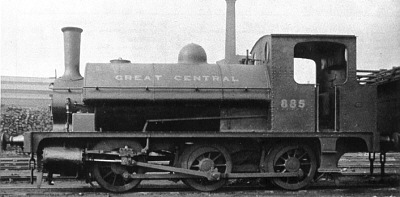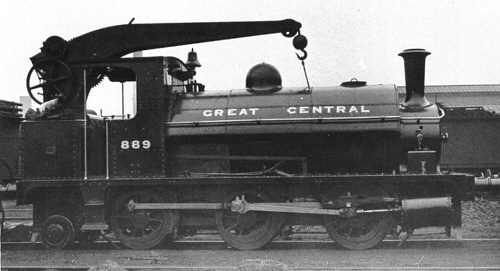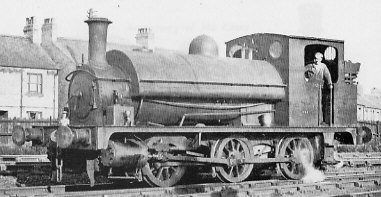The Pollitt J62 (GCR Class 5) 0-6-0ST Locomotives

These locomotives were designed by Pollitt for working the docks at Grimsby, and other locations with sharp curves. A total of twelve locomotives were built at Gorton in 1897, and construction straddled the change of name from the Manchester Sheffield & Lincolnshire Railway (MS&LR) to the Great Central Railway (GCR). This resulted in No. 891 being the last engine built by the MS&LR, and No. 892 being the first engine to be built by the new GCR.
For dock working, the J62s were fitted with a warning bell and distinctive hooter instead of a whistle. This was initially positioned on the cab roof, but was later moved to the top of the saddletank in-front of the cab. The LNER later moved the bells under the boiler. Pollitt stovepipe chimneys were initially fitted, but many J62s received Robinson-style chimneys before Grouping (1923). Wire basket spark arresters were fitted to many J62 chimneys at various times.

In December 1903, Robinson rebuilt No. 889 as an 0-6-2ST with a 4 ton crane. The crane was built by Vulcan Foundry, and was mounted at the bunker end. The new trailing truck had 2ft diameter wheels, and the total length of the locomotive was increased to 27ft 6in. The rebuilt No. 889 was used as a shunter for Gorton Works until January 1918, when it sustained damage due to a collision. The crane and rear extension were removed, and No. 889 re-entered service as a conventional 0-6-0ST GCR Class 5.
When built, the J62s were allocated to the docks at Grimsby, Immingham, and Birkenhead. By Grouping (1923), they were divided between Immingham and Wrexham, with one locomotive at Staveley Works. During the 1920s and 1930s there were occasional re-allocations of one or two locomotives to Bidston, Ipswich Docks, Chester, Trafford Park, and Ardsley.

Withdrawals started in 1935 and progressed at a slow rate. In December 1936, three were loaned to Sir Robert McAlpine for the construction of Ebbw Vale steelworks in South Wales. No. 5886 was damaged during this work and was withdrawn in November 1937. The other two returned to LNER use in 1938. By 1945, only four J62s remained in service: Wrexham (2), Sheffield (1), and Immingham (1). The Sheffield engine was often loaned to private companies in the area. The last withdrawal was No. 68200 from Wrexham in November 1951.
Technical Details
| Cylinders (x2): | (outside) | 13x20in. |
| Motion: | Stephenson | |
| Valves: | Slide | |
| Boiler: | Diameter (max): | 3ft 6.96in |
| Length: | 9ft 3in | |
| Boiler Pressure: | 150psi | |
| Diagram No: | 24 | |
| Heating Surface: | Total: | 590 sq.ft. |
| Firebox: | 60 sq.ft. | |
| Tubes: | 530 sq.ft. (124x 1.75in dia.) | |
| Grate Area: | 11.43 sq.ft. | |
| Wheels: | 3ft 6in | |
| Total Wheelbase: | 12ft | |
| Tractive Effort: | (at 85%) | 10,260 lb |
| Length: | 26ft 11.5in | |
| Weight: | 30t 17cwt | |
| Max. Axle Load: | 11t 10cwt | |
| Water Capacity: | 600 gallons | |
| Coal Capacity: | 1t 10cwt |
Preservation
None of the J62s survived into preservation.
Models
I am not aware of any models of the J62s in any scale.
Acknowledgements
Thank you Malcolm Peirson for the photographs of GCR Nos. 885 & 889.